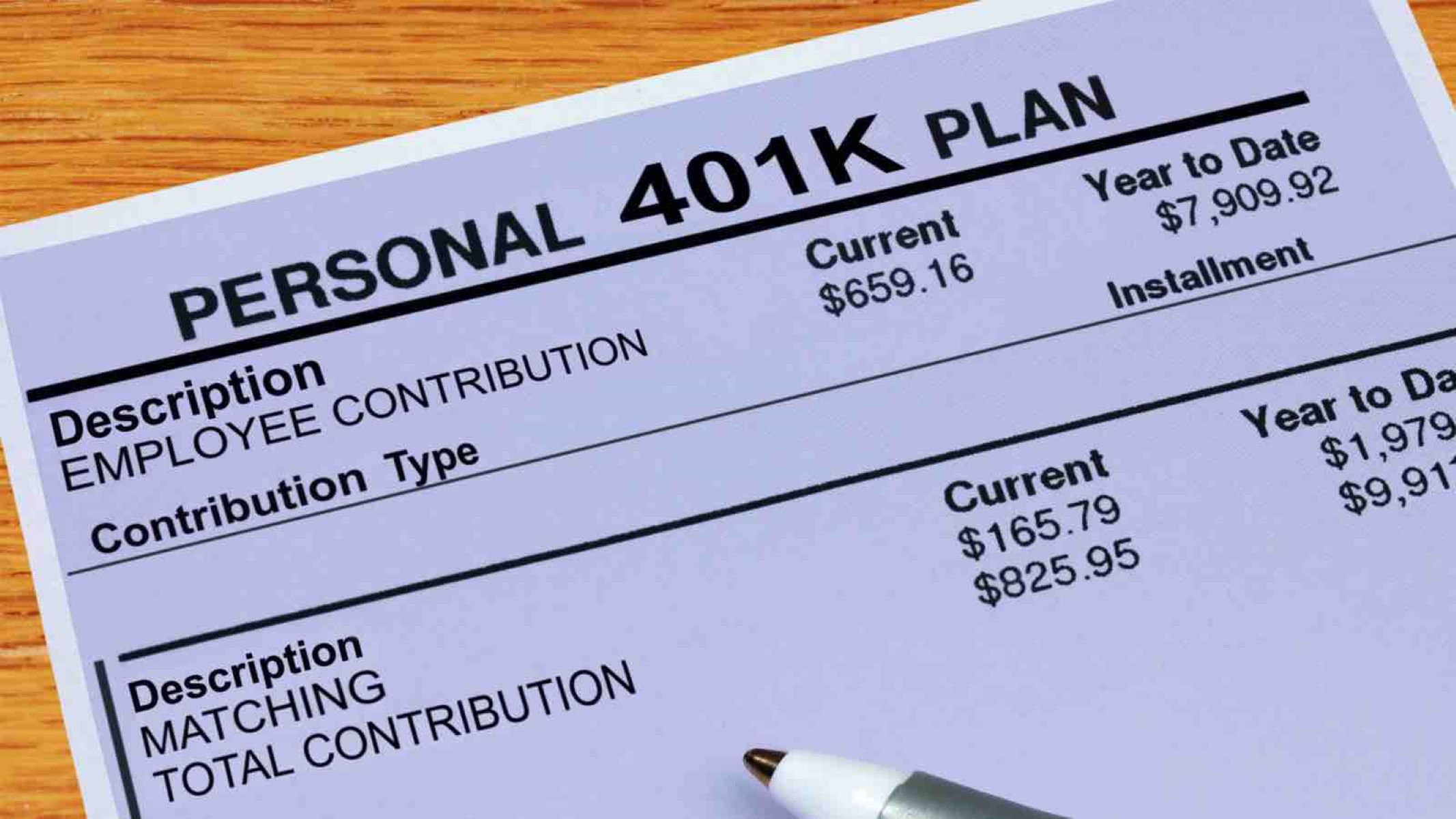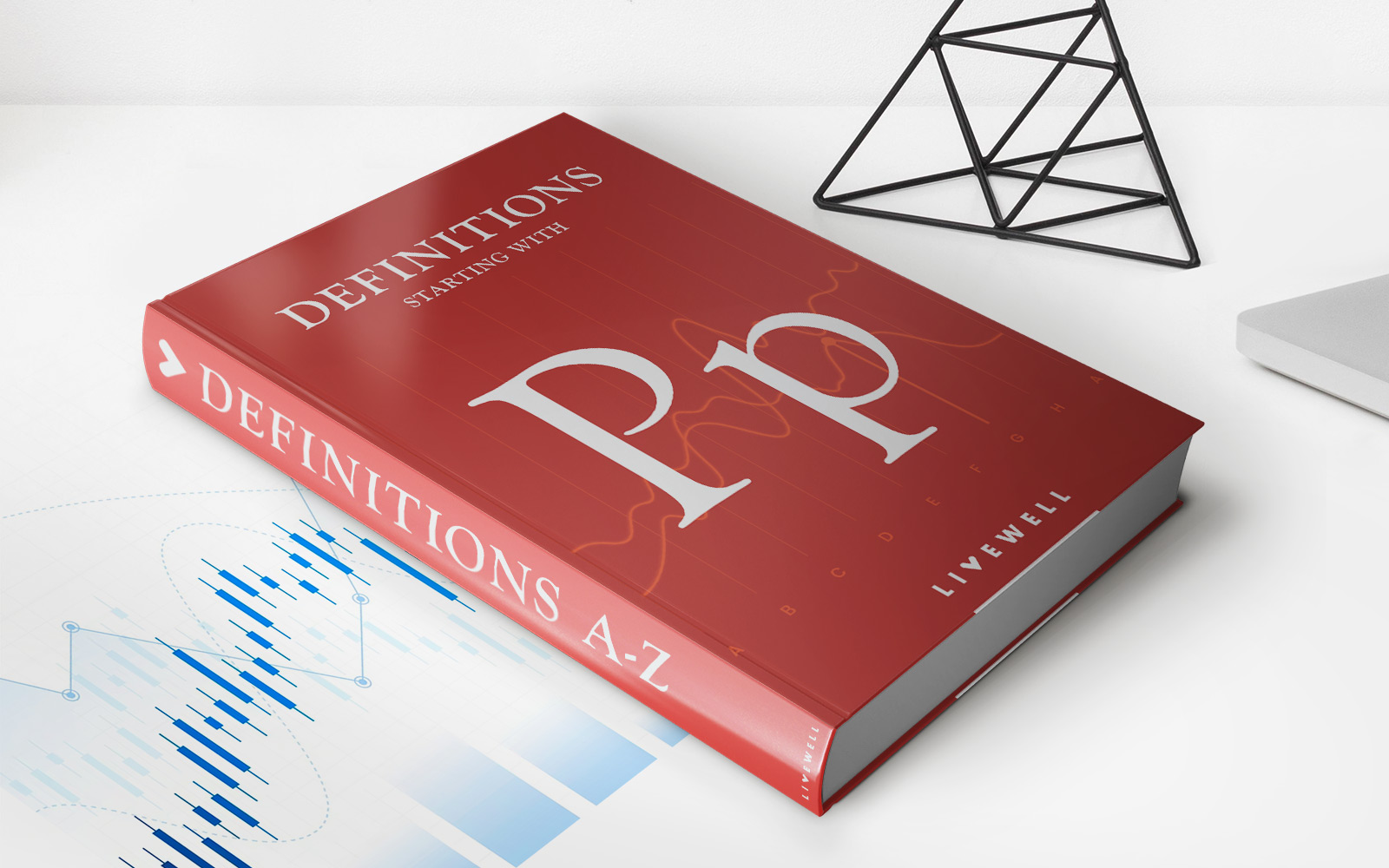

Finance
How Much To Contribute To 401K In 20S
Published: October 17, 2023
Learn the optimal 401K contribution in your 20s to secure your financial future. Enhance your finance and retirement plan with expert tips and strategies.
(Many of the links in this article redirect to a specific reviewed product. Your purchase of these products through affiliate links helps to generate commission for LiveWell, at no extra cost. Learn more)
Table of Contents
- Introduction
- Understanding the Importance of Saving for Retirement
- The Basics of a 401K Plan
- Factors to Consider When Determining 401K Contributions in Your 20s
- Analyzing Your Financial Goals and Priorities
- Assessing Your Current Financial Situation
- Determining the Ideal Percentage to Contribute to Your 401K
- Maximizing Employer Matching Contributions
- Balancing 401K Contributions with Other Financial Obligations
- Monitoring and Adjusting Your 401K Contributions Over Time
- Conclusion
Introduction
Saving for retirement is a crucial aspect of financial planning, and the earlier you start, the better. In your 20s, retirement may seem like a distant milestone, but it’s never too early to begin saving for the future. One of the most effective ways to save for retirement is through a 401K plan.
A 401K is an employer-sponsored retirement account that allows you to contribute a portion of your pre-tax income, which grows tax-deferred until you withdraw the funds during retirement. It offers various investment options, such as mutual funds and stocks, to help your contributions grow over time.
Understanding how much to contribute to your 401K in your 20s is essential as it sets the foundation for your retirement savings. It requires careful consideration of your financial goals, current financial situation, and other factors.
In this article, we’ll explore the factors to consider when determining 401K contributions in your 20s. We’ll discuss how to analyze your financial goals, assess your current financial situation, and determine the ideal percentage to contribute to your 401K. We’ll also provide tips on maximizing employer matching contributions and balancing your 401K contributions with other financial obligations.
By the end of this article, you’ll have a clearer understanding of how much to contribute to your 401K in your 20s, enabling you to set yourself up for a comfortable retirement.
Understanding the Importance of Saving for Retirement
Retirement may seem far away when you’re in your 20s, but it’s important to start saving for it as early as possible. The earlier you begin saving, the more time your money has to grow, thanks to the power of compounding.
One of the main reasons saving for retirement is vital is that you’ll need a substantial amount of money to maintain your lifestyle once you stop working. Social Security benefits alone may not be enough to cover your expenses, so having your own retirement savings is crucial.
Additionally, life expectancy is increasing, which means you could spend more years in retirement than previous generations. It’s essential to have the financial means to enjoy those years comfortably without relying solely on government assistance.
Another reason to prioritize retirement savings is the uncertainty of future government benefits. The economic landscape and the viability of programs like Social Security can change over time. By saving on your own, you have more control over your financial future and can be better prepared for any unforeseen circumstances.
Saving early and consistently also helps you take advantage of the power of compounding. Compounding occurs when your investment earnings generate additional returns, which are then reinvested and can lead to exponential growth over time. The earlier you start, the more time your money has to compound, potentially resulting in a significant nest egg by the time you retire.
Furthermore, saving for retirement in your 20s allows you to take on a more aggressive investment approach. With several decades until retirement, you can afford to invest in higher-risk, higher-reward investments such as stocks. This can generate higher returns and help grow your retirement savings faster.
Overall, saving for retirement is crucial in ensuring financial security and peace of mind in your golden years. By understanding the importance of retirement savings, you can make informed decisions about setting aside money for the future.
The Basics of a 401K Plan
A 401K plan is a popular retirement savings vehicle offered by many employers. Understanding the basics of how a 401K plan works is essential in maximizing its benefits and making informed decisions about your contributions.
Here are the key components and features of a 401K plan:
Employer-sponsored: A 401K plan is typically offered by employers as part of their benefits package. It allows employees to contribute a portion of their pre-tax income towards their retirement savings. Some employers may also offer matching contributions, where they contribute a certain percentage based on the employee’s contribution.
Pre-tax contributions: One of the main advantages of a 401K plan is the ability to contribute pre-tax dollars. This means that the money deducted from your paycheck goes into your 401K account before income taxes are taken out. This reduces your taxable income for the year, resulting in potential tax savings.
Tax-deferred growth: The contributions you make to your 401K plan, as well as any investment gains, grow tax-deferred. This means you won’t pay taxes on the earnings until you withdraw the funds during retirement. This allows your savings to potentially grow faster without the burden of immediate taxes.
Contribution limits: The IRS sets limits on how much you can contribute to your 401K plan each year. As of 2021, the maximum contribution limit is $19,500 for individuals under the age of 50. For individuals aged 50 and above, there is a catch-up contribution allowance of an additional $6,500, bringing the total maximum contribution limit to $26,000. It’s important to be aware of these limits and aim to contribute as much as possible to take full advantage of the tax benefits.
Investment options: Most 401K plans offer a range of investment options, such as mutual funds, target-date funds, and company stock. It’s important to review and understand the available options to make informed investment decisions based on your risk tolerance and retirement goals.
Vesting: Vesting refers to the ownership of the contributions made by your employer. Some employers have a vesting schedule, which means you may not fully own the employer-matched contributions until you have worked for a certain period of time. It’s essential to understand your employer’s vesting schedule and factor it into your retirement savings strategy.
Portability: If you change jobs, you can typically roll over your 401K plan into a new employer’s plan or an individual retirement account (IRA). This ensures that your retirement savings continue to grow tax-deferred and gives you more control over your investments.
Understanding these basics of a 401K plan can help you make the most of this retirement savings tool. It’s important to review the specifics of your employer’s 401K plan and consult with a financial advisor if needed to optimize your contributions and investment strategy.
Factors to Consider When Determining 401K Contributions in Your 20s
When deciding how much to contribute to your 401K in your 20s, it’s important to consider various factors that will impact your current and future financial situation. Here are some key factors to keep in mind:
Financial goals: Start by clarifying your long-term financial goals. Do you want to retire early? Save for a down payment on a house? Pay off student loans? Understanding your goals will help you prioritize your 401K contributions and determine how much you need to save each year.
Current income: Consider your current income level and how much you can comfortably contribute to your 401K. It’s generally recommended to contribute at least enough to take advantage of any employer matching contributions, as this is essentially free money. If possible, aim to contribute more than the minimum to maximize your retirement savings.
Budget and expenses: Assess your monthly expenses and budget to determine how much you can allocate towards your 401K contributions. It’s important to strike a balance between saving for retirement and meeting your current financial obligations.
Debt obligations: Consider your outstanding debts, such as student loans or credit card debt. If you have high-interest debts, it may be more beneficial to prioritize paying them off before contributing heavily to your 401K. However, it’s still important to contribute enough to capture any employer matching contributions.
Risk tolerance: Assess your risk tolerance and investment preferences. In your 20s, you have a longer time horizon until retirement, which allows you to take on more aggressive investment strategies. You may choose to allocate a higher percentage of your contributions to equity funds for potential higher returns over the long term.
Future income expectations: Consider your potential career growth and income trajectory. If you anticipate significant increases in income over time, you may want to ramp up your 401K contributions gradually to take advantage of higher tax savings.
Emergency savings: Ensure you have an emergency fund in place before allocating a significant portion of your income to your 401K. This will provide a safety net for unexpected expenses and help you avoid dipping into your retirement savings prematurely.
Life events: Take into account any upcoming life events, such as getting married, starting a family, or purchasing a home. These events may impact your cash flow and ability to contribute higher amounts to your 401K.
By considering these factors, you can make a more informed decision about the percentage of your income to contribute to your 401K in your 20s. Remember, it’s important to start saving early and aim to increase your contributions over time as your income and financial situation improve. Regularly reviewing and adjusting your contributions will help you stay on track towards building a solid retirement nest egg.
Analyzing Your Financial Goals and Priorities
Before determining how much to contribute to your 401K in your 20s, it’s crucial to analyze your financial goals and priorities. Understanding what you want to achieve and what matters most to you will guide your decision-making process. Here are some key aspects to consider:
Retirement goals: Start by envisioning your ideal retirement lifestyle. Do you want to travel extensively, pursue hobbies, or maintain a simple and frugal lifestyle? Having a clear picture of your retirement goals will help you determine how much you need to save and how aggressively you should contribute to your 401K.
Short-term goals: Alongside retirement, consider any short-term financial goals, such as buying a home, starting a business, or paying off debt. It’s essential to strike a balance between saving for retirement and allocating funds towards these goals. Assess the timeline and financial requirements of each goal to understand how they will impact your 401K contributions.
Income stability: Evaluate the stability of your income. If you work in a volatile industry or as a freelancer, it’s important to have a more robust emergency fund and potentially allocate a lower percentage of your income to your 401K. Conversely, if you have a stable job with reliable income, you may feel more comfortable contributing a higher percentage to your retirement savings.
Desired retirement age: Consider when you envision retiring. If you want to retire early, you may need to contribute a higher percentage of your income to your 401K in your 20s. On the other hand, if you plan to work until a traditional retirement age, you may have more flexibility in your contribution strategy.
Income growth potential: Evaluate your career trajectory and income growth potential. Are you in an industry with high earning potential? Do you anticipate salary increases over time? If so, you may be able to contribute a lower percentage to your 401K initially and increase your contributions as your income rises.
Risk tolerance: Assess your risk tolerance and investment preferences. Your risk tolerance may influence how much you’re comfortable allocating to riskier investments, such as stocks, and how much you allocate to more stable options, like bonds. Finding the right balance is crucial to achieve your financial goals without losing sleep over market volatility.
Family commitments: Evaluate any family commitments you have or anticipate in the future. If you plan to have children or support aging parents, it may impact your ability to contribute higher amounts to your 401K. Factor in these responsibilities and ensure you have enough funds for both short-term and long-term needs.
By thoroughly analyzing your financial goals and priorities, you can make strategic decisions about your 401K contributions. It’s important to regularly revisit and reassess your goals as your circumstances change and as you progress through different life stages. Remember, saving for retirement is a long-term commitment, and aligning your contributions with your financial aspirations will put you on the path towards a secure and fulfilling future.
Assessing Your Current Financial Situation
When determining how much to contribute to your 401K in your 20s, it’s crucial to assess your current financial situation. Understanding your income, expenses, and overall financial health will help you make informed decisions about your retirement savings. Here are key aspects to consider:
Income: Calculate your total income from all sources. This includes your salary, any side hustles or freelance work, rental income, and other streams of revenue. Having a clear understanding of your income will give you a foundation for determining how much you can allocate to your 401K.
Expenses: Evaluate your monthly expenses and create a comprehensive budget. Track your spending over a few months to get an accurate picture of where your money is going. Identify areas where you can potentially cut back or make adjustments to free up additional funds for your 401K contributions.
Debt: Assess your outstanding debt, such as student loans, credit card debt, or car loans. Consider the interest rates, monthly payments, and impact on your overall financial situation. It’s important to strike a balance between paying off debt and saving for retirement. Prioritize higher-interest debts while still contributing enough to your 401K to capture any employer matching contributions.
Emergency savings: Evaluate the size and adequacy of your emergency fund. Aim to have three to six months’ worth of living expenses readily available in case of unexpected financial emergencies. Having an emergency fund gives you peace of mind and prevents the need to dip into your retirement savings prematurely.
Existing retirement savings: Take stock of any existing retirement savings you may have, such as individual retirement accounts (IRAs) or previous employer’s 401K plans. Consider how much you have saved and how those funds are invested. This information will help you determine whether you need to increase your contributions to your current 401K or adjust your investment strategy.
Insurance coverage: Assess your insurance coverage, including health insurance, life insurance, and disability insurance. Adequate coverage ensures that you are protected from unexpected medical expenses or loss of income that could impact your ability to contribute to your 401K.
Future financial obligations: Consider any anticipated future financial obligations, such as purchasing a home, starting a family, or pursuing higher education. These obligations may impact your ability to contribute higher amounts to your 401K. Factor in these expenses and plan accordingly.
By assessing your current financial situation, you can determine how much you can realistically contribute to your 401K. It’s important to find a balance between saving for retirement and meeting your immediate financial needs and goals. Regularly reviewing and adjusting your contributions as your financial situation changes will keep you on track towards building a secure future.
Determining the Ideal Percentage to Contribute to Your 401K
When determining how much to contribute to your 401K in your 20s, it’s important to find the ideal percentage that balances your financial goals and current situation. While there is no one-size-fits-all answer, here are some considerations to help you determine the right contribution percentage:
Take advantage of employer matching: If your employer offers a matching contribution, aim to contribute at least enough to maximize this benefit. Employer matching is essentially free money that boosts your retirement savings. Review your employer’s matching policy and strive to contribute the percentage required to maximize this valuable perk.
Consider the 50/30/20 rule: A common guideline for budgeting is the 50/30/20 rule. Dedicate 50% of your income to essential expenses, 30% to discretionary spending, and at least 20% to savings, including retirement savings. Adjusting the 20% allocation to prioritize your 401K contributions can ensure you’re on track for a secure retirement.
Factor in your other financial goals: Consider how much you need to save for other financial goals, such as buying a home, starting a business, or paying off debt. Based on your financial priorities, you may need to allocate a lower percentage to your 401K to free up funds for these goals. Strike a balance between saving for retirement and addressing your other financial aspirations.
Assess your income and expenses: Evaluate your overall income and expenses to determine how much you can comfortably contribute to your 401K. Look for areas where you can cut back on spending or increase your income to free up additional funds for retirement savings. Avoid overextending yourself and ensure your contribution percentage aligns with your financial capacity.
Consider your risk tolerance and investment strategy: Assess your risk tolerance and investment preferences. In your 20s, you have a longer time horizon until retirement, which allows for a more aggressive investment approach. If you can tolerate higher risk, you may choose to contribute a higher percentage and allocate more funds to equity-focused investments for potential long-term growth.
Track your progress and adjust over time: Regularly monitor your 401K account and track your progress towards your retirement savings goals. As your income increases or your financial situation changes, consider increasing your contribution percentage. Revisit your retirement savings strategy at least once a year and make adjustments as needed to stay on target.
Remember, the ideal contribution percentage will depend on your individual circumstances and financial goals. It’s important to regularly review and adapt your contribution percentage as your situation evolves. Consulting with a financial advisor can also provide valuable insights and guidance in determining the ideal percentage to contribute to your 401K.
Maximizing Employer Matching Contributions
One of the most significant advantages of a 401K plan is the potential for employer matching contributions. Employer matches are essentially free money that can significantly boost your retirement savings. Here are some strategies to maximize your employer matching contributions:
Understand your employer’s matching policy: Start by fully understanding your employer’s matching policy. Review the terms and conditions to determine how much your employer is willing to match based on your contributions. Each company has its own matching structure, such as dollar-for-dollar matches up to a certain percentage of your salary or a partial match based on a specific percentage. Knowing the specifics will help you make informed decisions.
Contribute enough to max out the match: Aim to contribute at least enough to receive the maximum employer match. If your employer offers a dollar-for-dollar match up to 5% of your salary, contributing at least 5% ensures you’re taking full advantage of the match. Failing to contribute enough means leaving money on the table.
Budget your contributions accordingly: Adjust your budget to accommodate the contributions needed to maximize the employer match. If necessary, reassess your expenses and consider cutting back on discretionary spending to allocate more towards your 401K. Prioritizing the match will help you make the most of this valuable benefit.
Automate your contributions: Set up automatic contributions from your paycheck to your 401K account. Automating your contributions ensures that you consistently contribute and never miss out on the employer match. This also makes it easier to adjust your contributions in the future as your income changes or contribution limits increase.
Take advantage of catch-up contributions: If you’re age 50 or older, take advantage of catch-up contributions. These additional contributions allow you to contribute more than the annual limit set for younger individuals. By making catch-up contributions, you can further maximize your employer match and accelerate your retirement savings.
Consider front-loading contributions: If your employer allows it, front-loading your contributions by contributing a larger percentage at the beginning of the year can help you reach the maximum matching threshold quickly. This strategy maximizes the time your contributions have to grow through investment returns.
Seek professional advice: If you’re unsure about your 401K plan or how to optimize your contributions, consider seeking advice from a financial advisor. A professional can help you navigate the intricacies of your plan and provide personalized guidance based on your unique circumstances and goals.
Maximizing employer matching contributions is crucial for maximizing your retirement savings potential. By understanding your employer’s matching policy, budgeting your contributions, automating the process, and seeking expert advice when needed, you can take full advantage of this valuable benefit and accelerate your journey towards a secure retirement.
Balancing 401K Contributions with Other Financial Obligations
While it’s important to prioritize saving for retirement through your 401K plan, it’s also crucial to balance your contributions with other financial obligations. Here are some strategies to help you find the right balance:
Prioritize high-interest debt: If you have high-interest debt, such as credit card debt or student loans, it may be wise to prioritize paying off these obligations before contributing heavily to your 401K. High-interest debt can hinder your financial progress and outweigh the potential investment gains from your retirement savings. Focus on reducing and eliminating high-interest debt before ramping up your contributions.
Emergency fund: Build and maintain an emergency fund to cover unexpected expenses. Having a safety net in place protects you from dipping into your retirement savings in times of financial crises. Strive for three to six months’ worth of living expenses in a liquid and easily accessible account before allocating a significant portion of your income to your 401K.
Short-term financial goals: Consider your short-term financial goals, such as saving for a down payment on a house, starting a family, or pursuing further education. Allocate funds towards these goals while still contributing enough to your 401K to receive any employer matching contributions. Strike a balance between saving for retirement and addressing your immediate financial priorities.
Healthcare costs and insurance: Factoring in healthcare costs and insurance premiums is crucial in budgeting for your 401K contributions. If your employer offers a Health Savings Account (HSA) or Flexible Spending Account (FSA), take advantage of these accounts to manage healthcare expenses and save on taxes. Assess your insurance coverage to ensure it adequately protects you and your family without stretching your budget too thin.
Childcare and education expenses: If you have children or plan to start a family, consider the associated financial costs such as childcare, education, and extracurricular activities. These expenses can significantly impact your cash flow and ability to contribute higher amounts to your 401K. Plan and budget accordingly to ensure you can meet these obligations while still saving for retirement.
Long-term financial goals: Factor in any long-term financial goals, such as paying off your mortgage, starting a business, or building a significant investment portfolio. Allocate funds towards these goals alongside your retirement savings, striking a balance that helps you achieve multiple financial milestones over time.
Regularly reassess your financial situation: Life circumstances and financial priorities can change over time. It’s important to regularly reassess your financial situation and adjust your contributions accordingly. As your income increases or debt decreases, consider increasing your 401K contributions to accelerate your retirement savings. Regularly evaluating your financial obligations ensures you maintain the right balance in your saving and spending habits.
By carefully balancing your 401K contributions with other financial obligations, you can work towards a secure retirement while still addressing your immediate and long-term financial needs. It’s essential to regularly review and adjust your savings strategy to ensure it aligns with your changing circumstances and goals.
Monitoring and Adjusting Your 401K Contributions Over Time
Saving for retirement is a long-term endeavor, and as such, it’s important to regularly monitor and adjust your 401K contributions to ensure you stay on track. Here are some key considerations for effectively managing your contributions over time:
Regularly review your retirement goals: Periodically assess your retirement goals and desired lifestyle. As you get closer to retirement age, your goals may become more defined, and you may have a clearer idea of the income you’ll need. Regularly reviewing your goals helps you evaluate if your current contribution levels align with your retirement objectives.
Evaluate your investment performance: Assess the performance of your 401K investments regularly. Review how your funds are performing and whether they align with your risk tolerance and long-term goals. If certain investments consistently underperform, consider reallocating your contributions to other options that might better suit your needs.
Consider life changes and financial milestones: Life circumstances can change over time, necessitating adjustments in your retirement savings strategy. Major life events like marriage, children, career changes, or the purchase of a home can impact your ability to contribute to your 401K. Assess these changes and adjust your contributions accordingly to ensure you maintain a suitable balance between immediate financial needs and long-term retirement savings.
Maximize contribution limits: As your income grows, aim to maximize your annual contribution to take full advantage of the tax benefits and potential growth opportunities that a 401K offers. Regularly review your contributions to ensure they align with the maximum allowable limit set by the IRS. For individuals aged 50 or older, consider taking advantage of catch-up contributions to further boost your retirement savings.
Revisit your asset allocation: Over time, your risk tolerance and investment preferences may change. As you age, you may want to gradually shift towards more conservative investment options to protect your accumulated wealth. Periodically reassess and adjust your asset allocation to align with your changing risk profile and long-term retirement goals.
Seek professional guidance: If you’re unsure about managing your 401K contributions or need assistance in strategizing for your retirement, consider seeking advice from a financial advisor. A professional can help you evaluate your progress, fine-tune your contribution strategy, and address any concerns or questions you may have.
Stay informed about plan updates and changes: Keep yourself informed about any updates or changes to your 401K plan. This includes modifications to the employer match, changes in investment options, or adjustments to plan rules. Being aware of these updates allows you to make timely adjustments to your contribution strategy as needed.
Remember, monitoring and adjusting your 401K contributions over time is essential to ensure your retirement savings align with your evolving goals and circumstances. Regularly reviewing your contributions, evaluating investment performance, and seeking professional guidance when necessary will help you stay on track towards a financially secure retirement.
Conclusion
Saving for retirement in your 20s is the foundation for a financially secure future. By understanding the importance of saving for retirement early on, you can set yourself on a path towards financial independence and stability. A 401K plan is a powerful tool that offers tax advantages and potential employer matching contributions, making it a valuable asset in your retirement savings strategy.
When determining how much to contribute to your 401K, it’s crucial to consider various factors. Assess your financial goals, current financial situation, and other obligations to find the right balance between saving for retirement and addressing immediate financial needs. Maximize employer matching contributions by contributing enough to receive the full match, and consider automating your contributions to ensure consistency.
Regularly monitor and adjust your 401K contributions over time. Review your retirement goals, evaluate investment performance, and consider life changes or milestones that may warrant adjustments. Stay informed about changes to your plan and seek professional guidance when needed.
Remember, contributing to your 401K in your 20s is just the starting point. As your income grows and priorities shift, aim to increase your contributions and maximize your annual limit. By taking a proactive approach to your retirement savings and making adjustments along the way, you can build a solid financial foundation for a fulfilling and secure retirement.
Start saving early, contribute consistently, and maximize the benefits of your 401K plan. By doing so, you’ll be well on your way to enjoying the retirement you envision, free from financial worries and with the freedom to live life on your own terms.














